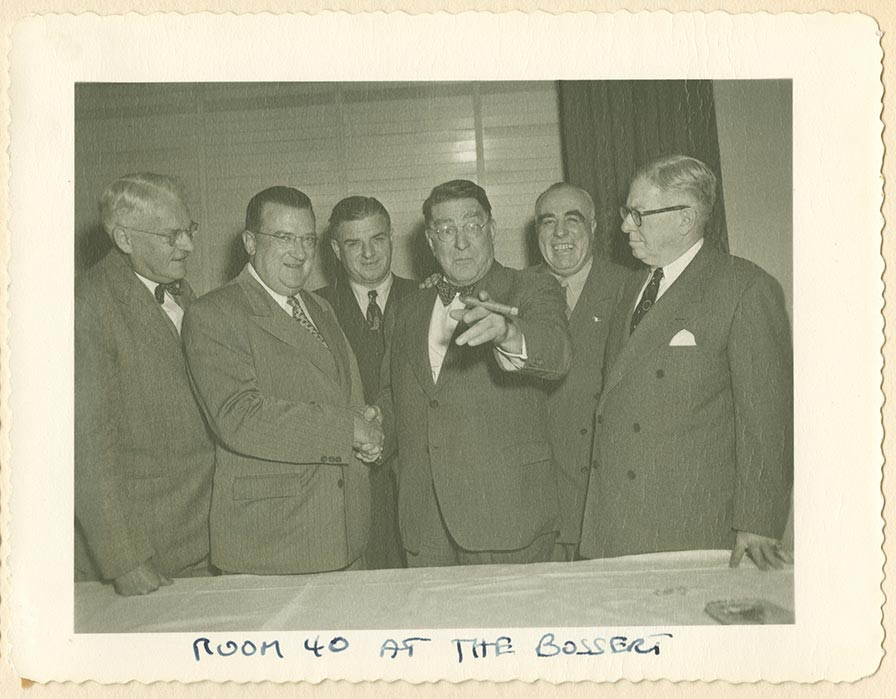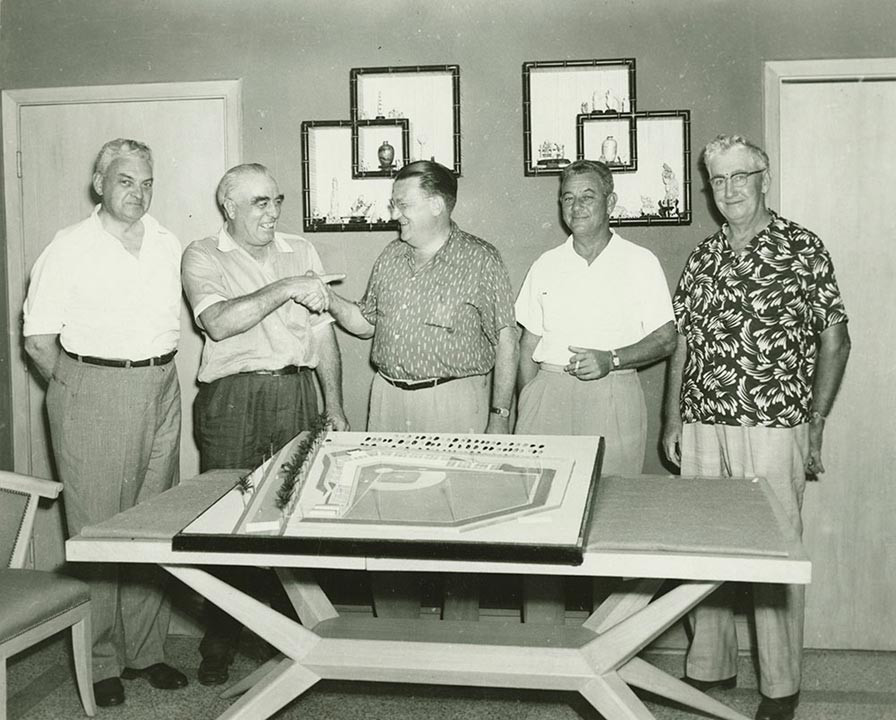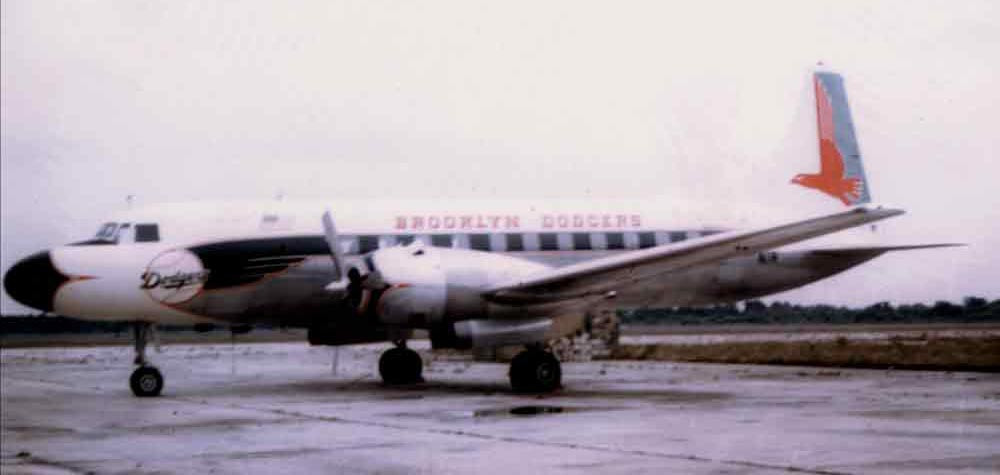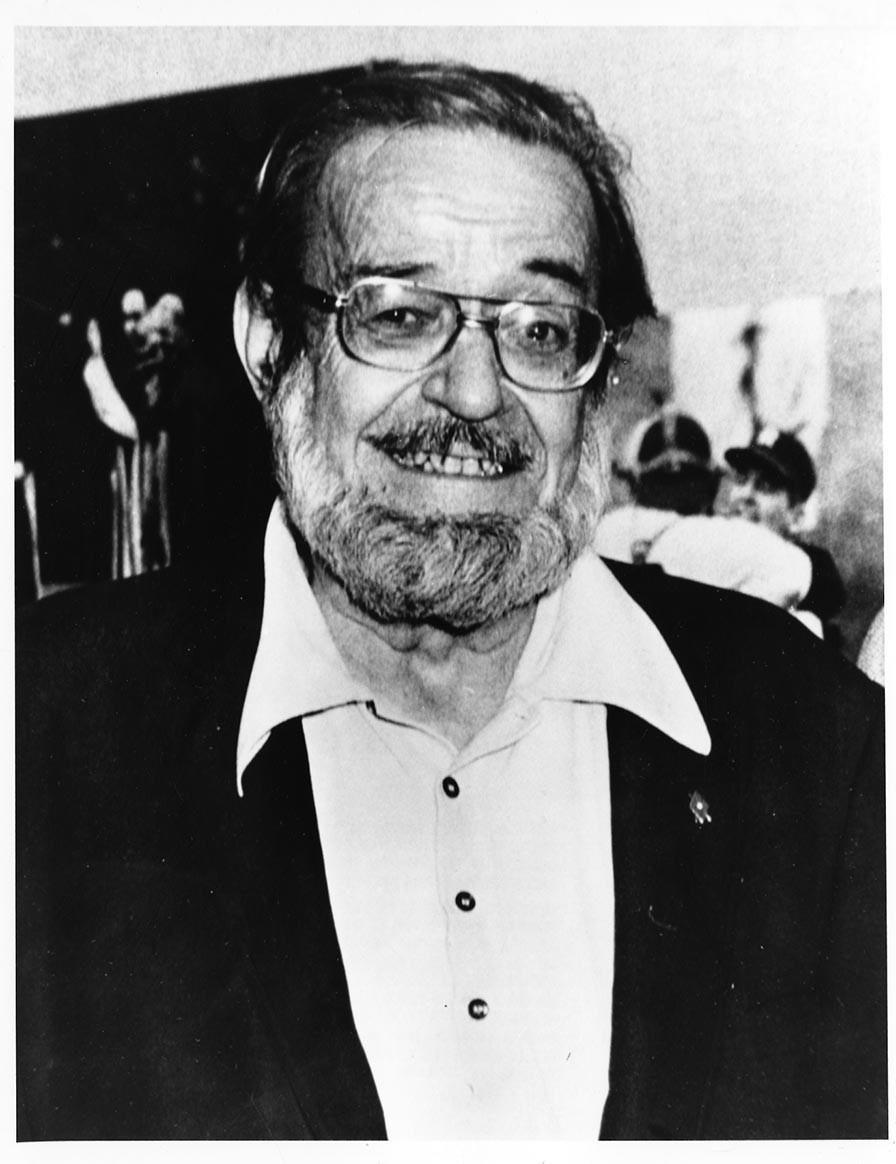This Day in Walter O’Malley History:
-
On the suggestion of Dodger Vice President Walter O’Malley, negotiations begin to transport several exhibits of the National Baseball Hall of Fame in Cooperstown, New York to Brooklyn for display there during the major league All-Star Game on July 12, 1949. “Very few of the fans in Brooklyn ever get a chance to go to Cooperstown, so why not bring Cooperstown to Brooklyn?” said O’Malley. The idea was immediately favorably received by officials at Cooperstown.
-
Walter O’Malley nominates Bud Holman of Vero Beach to be named to the Board of Directors of the Brooklyn Dodgers, replacing Walter Seeger of St. Paul, Minnesota, who had resigned. Holman’s nomination was seconded by John L. Smith with subsequent unanimous election (O’Malley, Smith and Branch Rickey voting) by the Directors. Holman was then asked to join the meeting.
-
New President of the Dodgers Walter O’Malley discusses his plans for the team as he prepares to head to Dodgertown in Vero Beach, Florida. “We’re going to try to put some theater into our ball park — color and excitement...We’ve got to get the real customers back, the little fellows who really support baseball. It’s no secret that, in 1950, Brooklyn’s paid attendance dropped from 1,650,000 to 1,200,000. Well, it’s the club’s job — and my job — to put those 450,000 fans back into the stands. We’re now going to strive for a better relationship with the fans and the press and try to put less emphasis on the carriage-trade business. Yes, it’s the little guy who comes to your park 20 to 30 times a year — the real fan who is willing to pay his way on a dull Monday afternoon to see us play a second-division team, and who isn’t just waiting for the big games — that’s the man we want to reach in Brooklyn this year. This is now a full-time job for me but we’re going to operate this headquarters on a 9 to 5 basis and no more work on Saturdays — well, not much. I think the best ball player in the National League is Duke Snider. Sentimentally, my pitcher is Preacher Roe, but that (Don) Newcombe has more stuff than anybody else. I grew up as a Giant fan and I always regarded Bill Terry as my favorite ball player. Bill’s living at Jacksonville (Florida) and I’m going to invite him down to Vero Beach. Once he gets there, he will begin helping out.” Ward Morehouse, The Sporting News, March 7, 1951
-
To help drum up interest in Miami, Florida for Dodger home Spring Training games, city officials get an assist from Walter O’Malley and arrange for a motorcade of Dodger players to travel through the streets. Also on this date, plans for a 5,000-seat stadium at Dodgertown in Vero Beach, Florida are unveiled at a press conference by O’Malley and designer Capt. Emil Praeger to be built for the 1953 exhibition season. Capt. Praeger was the consulting engineer on the United Nations building in 1953 and the White House renovation in 1949. Harold Rosenthal of the New York Herald Tribune quotes O’Malley regarding his Dodgertown stadium plans, “If 5,000 seats is too big a job, perhaps we can start with 3,500 and add the other seats later.”
-
The Brooklyn Eagle writes of Walter O’Malley’s contributions to the new Holman Stadium in preparation for its opener that spring. “Holman Stadium is like a new toy to the headman of the Dodgers. He spends long hours there every day watching the workmen put the finishing touches on the park for Wednesday’s gala opening against the Athletics (March 11). And after the dark he (O’Malley) turns on the lights.” Brooklyn Eagle, March 7, 1953 Another article adds, “Walter O’Malley had the lights on at his prized little stadium last night and led an expedition there for inspection and admiration. The Dodger president was there again today supervising the pulverizing of the infield dirt by a special machine. He wants to be sure the field is in perfect condition for the dedication day game.” Roscoe McGowen, New York Times, March 7, 1953
-
Dick Young writes in his New York Daily News column of the interest Walter O’Malley has shown for his new Holman Stadium at Dodgertown in Vero Beach, Florida. “A man of 50 plays with a new toy like a boy of 5. No kid ever pored over his set of electric trains the way Walter O’Malley putters around the picturesque new ball park here. It’s called Holman Stadium, after one of the local citizenry who was instrumental in bringing the Brooks to Vero Beach for long term Spring training, but it’s Walter O’Malley’s baby. He walks about it, hour on hour, over the soft grass of the infield, over the smoothly raked skinned portion; he tiptoes carefully around the newly-seeded sidelines, looking for the signs of additional grass blades the way a parent gazes into his infant’s mouth for a sign of a new tooth. And when he can think of nothing more to inspect, he sits alone in the stands and just stares off into the svelte royal palms that fringe the outfield...pointing out each attractive detail that blends into the beautiful whole, (O’Malley) would tell you: ‘It seats 5,000; 1,650 of them boxes. The chairs in the boxes are the metal ones that used to be in the Polo Grounds boxes before (New York Giants owner Horace) Stoneham put in new ones. I asked Horace how much he wanted for them. He said I should send him a check for whatever I wanted. He’d give them to me (he’s that kind of fellow), but I’m paying him a dollar apiece.’” Dick Young, New York Daily News, March 8, 1953
-
Walter O’Malley drafts a letter to season ticket holders for the Dodgers’ exhibition season in Vero Beach as Holman Stadium is prepared for play. O’Malley speaks proudly of the efforts that went into the planning and construction of the ballpark. O’Malley writes, “We doubt if anyone in the country is unaware of the fact that there is built in Vero Beach, baseball’s newest and most beautifully landscaped stadium.”
-
The three-way transfer agreement is signed by the Brooklyn Dodgers, General Dynamics and Eastern Air Lines for the delivery of a Convair model 440 passenger airplane to be used for transportation by the Dodgers in Spring Training and the regular season.
-
The Dodgers announce that 40 home games will be broadcast in Spanish on WHOM Radio for the 1957 season. Buck Canel, who began broadcasting selected Dodger home games in Spanish in 1954, was again behind the microphone. After his distinguished career, Canel posthumously won the Ford C. Frick Award and was inducted into the National Baseball Hall of Fame on July 28, 1985.
-
The Dodgers begin the first of three spring training telecasts on KTTV Channel 11 from Holman Stadium in Vero Beach, Florida. The club had never televised as many exhibition games before. Also, for the first time, the Dodgers of 1970 would televise games in other National League cities besides San Francisco and San Diego.





